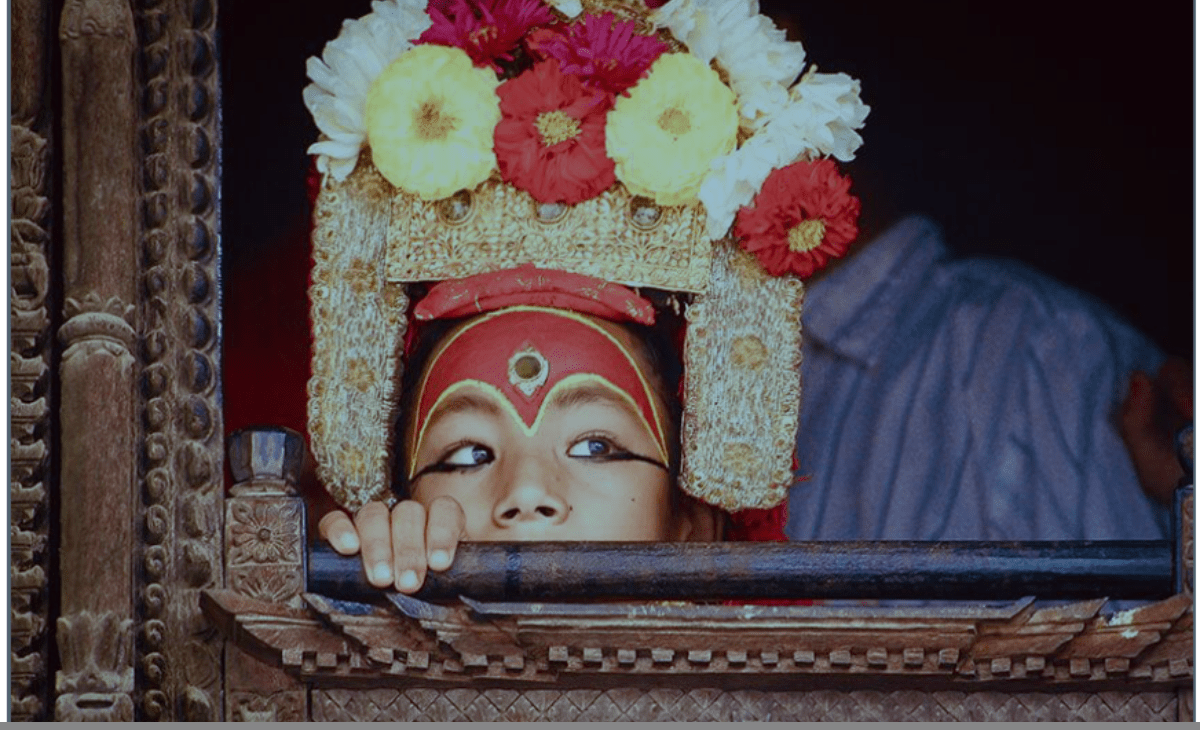Himani Sharma
In a grand and sacred ceremony held in the heart of Kathmandu’s Durbar Square, a two-year-eight-month-old girl, Aryatara Shakya, has been declared Nepal’s new Kumari, or Living Goddess. She succeeds Trishna Shakya, who served as the revered embodiment of divine power since 2017.
With this appointment, one of the world’s most unique living traditions continues, which is a blend of faith, culture and centuries-old spiritual heritage that remains deeply rooted in Nepalese identity.
Ancient tradition revived
The Kumari tradition, believed to date back to the 17th century during the reign of King Jayaprakash Malla, represents a living embodiment of the goddess Taleju Bhawani, a manifestation of Goddess Durga.
According to legend, the goddess appeared to the king in human form but disappeared after he offended her. In repentance, the king began the practice of selecting a young girl as her living representative, ensuring that the goddess would continue to bless the kingdom through her human form.
The Kumari is chosen from the Newar community, specifically the Buddhist Shakya or Bajracharya clans, who have been custodians of this sacred responsibility for generations.
The selection process is meticulous, involving traditional priests and astrologers who examine the child for divine attributes known as the thirty-two perfections. These include physical purity, a calm and fearless demeanour and auspicious bodily signs.
Life of divinity and seclusion
Once chosen, the Kumari leaves her home and begins her life in the Kumari Ghar, the intricately carved palace overlooking Kathmandu’s Durbar Square. From that moment, she is revered as the Living Goddess, worshipped by both Hindus and Buddhists alike.
The Kumari appears in public only during special religious occasions, the most prominent being Indra Jatra, when she is carried through the city in a beautifully adorned chariot as thousands gather to seek her blessings. Even Nepal’s monarchs, until the monarchy was abolished in 2008, would bow before the young goddess, symbolising the divine legitimacy of their rule.
Despite her exalted position, the Kumari’s life is one of great restraint. Her actions, expressions and even silence are considered prophetic by devotees. The divine status continues until she reaches puberty, at which point she returns to ordinary life and a new Kumari is chosen to take her place.
Modern reflections on sacred institution
The selection of Aryatara Shakya as the new Living Goddess comes at a time when Nepal is rapidly modernising yet remains deeply connected to its cultural roots. In recent years, there has been growing dialogue about balancing the spiritual significance of the tradition with modern perspectives on childhood, education and gender equality.
Former Kumaris have spoken about the challenges of adjusting to normal life after years of isolation and reverence. In response, the Kumari Ghar has gradually adopted changes, including access to formal education and limited interaction with the outside world, a step toward blending tradition with progress.
As little Aryatara begins her divine journey, the streets of Kathmandu echo with prayers, music, and the rhythm of devotion. For many Nepalis, the Kumari represents purity, protection, and the enduring spirit of their nation, a reminder that even in an age of political transitions and social change, some aspects of Nepal’s heritage remain eternal.

Himani Sharma





